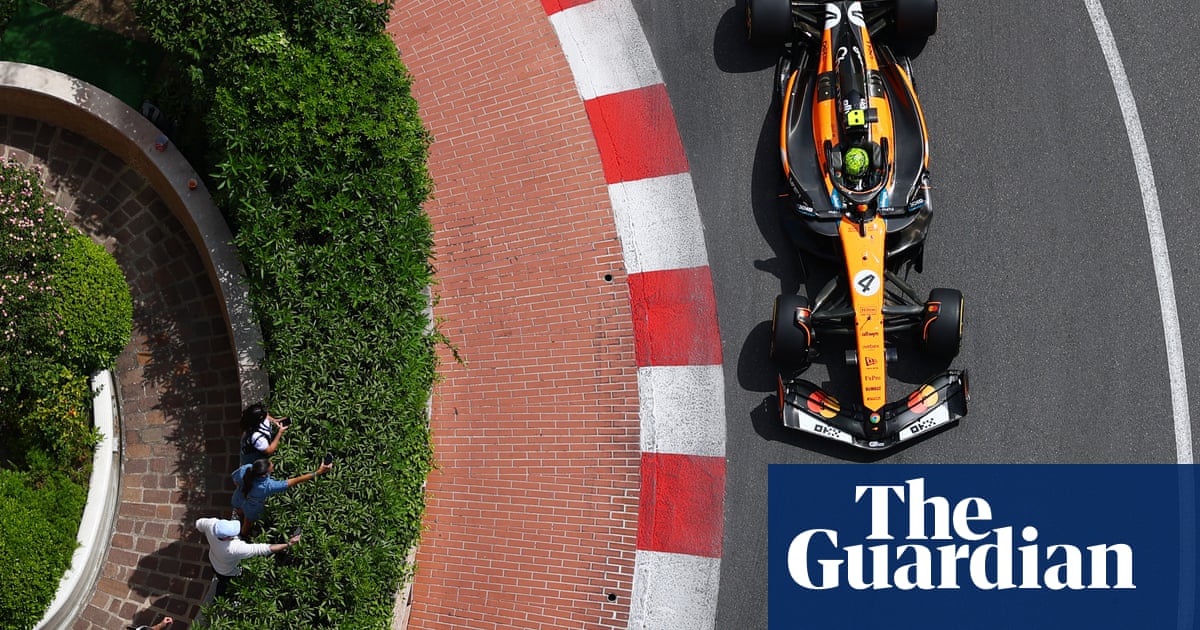Lando Norris claimed victory at the Monaco Grand Prix for McLaren, with a controlled drive from pole to the flag in Monte Carlo as Formula One’s hoped for reboot of the race with mandatory pit stops proved something of a damp squib.
Norris beat the Ferrari of Charles Leclerc into second with his McLaren teammate Oscar Piastri in third.Max Verstappenwas fourth for Red Bull and Lewis Hamilton, in fifth from seventh on the grid for Ferrari.
Once more it was largely a procession in Monaco at the front of the grid with no on-track overtakes and the field only mixed up to an extent in the midfield with some differing strategies imposed by the mandated two pit stops.
Nonetheless this was a confident and vital drive by Norris to take his debut Monaco win and who has now closed to within three points of title leader Piastri, with Verstappen 25 points back in third.
Norris had to hit back at Piastri in an increasingly tight title fight and did so emphatically to restate his world championship ambitions with a drive that will have given him huge confidence going forward and indicated that this is a battle that might yet flow to and fro across the season.
He has always maintained that despite his struggle with their car this season his commitment, his will to battle on was unwavering and he demonstrated it with a piece of relentlessly controlled skill and resolve in Monte Carlo. It was a masterful performance from driver and team for his first victory in Monaco and McLaren’s first here since 2008 when Hamilton took the flag.
F1 had hoped to improve on the spectacle at Monaco, too often of late a procession from lights to flag the cars too wide and too heavy for overtaking, by taking the unprecedented move of imposing the use of three tyres during the race and thusenforcing a two-pit stopminimum.
The intent was to try to introduce an element of strategic jeopardy, to give teams the opportunity to make a difference with tyre selections and pit strategy.
Come Sunday then and it was put to the test and the experiment, for that was what it was, was not enormously successful. The enforced stops did bring a level of uncertainty to the race that would otherwise have been absent and made it an intriguing game to follow as to how each team would react and respond to one another but ultimately did not make any fundamental difference to how it played out.
This effort might be considered a curious innovation for a sport selling itself as thrills and spills and gripping spectacle, yet it was at least an attempt to mix things up at Monaco. The rule change had hoped to function to an extent rather like a sudden mid-race shower, making teams think and work on the hop beyond the parameters of a straight one-stop.
But for the front five, who matched each other through their stops, it worked out in a rather mechanical and predictable fashion rather than throwing a spanner into the works as had been hoped.
Norris had just managed to hold his lead into turn one from a charging Leclerc and from then on with passing all but impossible it was down to he and McLaren executing flawlessly. They did so well, the frontrunners playing a waiting game, waiting to see when McLaren would jump, while Hamilton came in from sixth and after a very quick in-lap jumped Isack Hadjar through the stops.
Through the first stops the order then remained unchanged even as Leclerc and Verstappen looked for an overcut.
Norris led by five seconds from Leclerc at the halfway point, in front of Piastri, Verstappen and Hamilton but the front four were at very least absolutely pushing one another along, lapping at a good pace unable to allow too much of a gap to open with one stop still to come.
In the midfield the differing strategies, largely with teammates driving in order to aid one another, were creating bottlenecks, lap times dictated by creating gaps leading to a frustrated George Russell passing by cutting the corner at the Bus Stop chicane, for which he was given a drive-through penalty.
Piastri made his second stop on lap 48 and Leclerc covered him off a lap later, with Norris following on lap 50. All held their places as Verstappen extended his stint in the hope of a safety car.
Norris and Leclerc had caught him by lap 59 and the three began to circulate together, with Leclerc able to begin to pressure Norris as Verstappen backed them up. The Monegasque driver pulled right up to Norris and harried him relentlessly but there was no way through and Norris held his nerve. It was a brief period of enlivening intensity but when Verstappen took his final stop on lap 77, Norris had the lead again and with it the win.
Hadjar and Liam Lawson were sixth and eighth for Racing Bulls, Esteban Ocon seventh for Haas and Alex Albon and Carlos Sainz in ninth and tenth for Williams.
